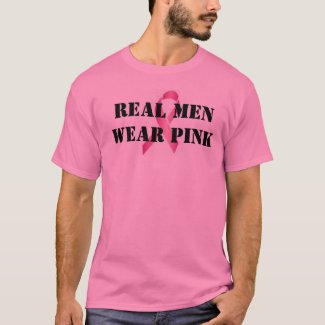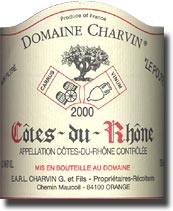Chateauneuf du Pape Blanc:
2001
Surprisingly still open knit and as youthful as ever, this vintage of Beaucastel Blanc (w/ 80 plus percent Roussanne) explodes from the glass w/ golden flower, honeysuckle, nutmeg and spiced rice pudding scents. The palate was thick, oily and decadent, w/ an impressive array of buttered melon flavors that envelope the mouth and are kept honest by good freshness and poise. When will this vintage creep into its awkward slumber? 93 points.
2006
The Roussanne really was shining in ’06, as it represented over 80% of the white Chateauneuf and could rival quite a few vintages of the Vieilles Vignes. This showed beautifully right out of the gates, full of golden flowers, roasted pecans, fresh fig and honeysuckle glazed lemon scents that shot from the glass as if they were coiled on a spring. In classic Roussanne fashion, this cuts a broad swath across the palate, showcasing expansive layers of impeccably ripe fruits that are cut w/ ample acidity, crunching along to a persistent, powerful finish, 95 points.
Roussanne Vieilles Vignes:
2004
The standard bearer of fine white wine from the Southern Rhone showcased just what distinguishes it from the pack, as its haunting depth and marathon length were on full display once the cork was popped. A pure Roussanne, from 50 plus year old vines, explodes w/ waves of orange marmalade, honey coated pineapples, lanolin, buttered walnuts and green tea notes that coat the saturate the palate w/ thick, intense flesh. The texture can be likened to flan, as the wine’s low acid, pleasure-filled thrill-ride overwhelms the senses to infinity. Depending upon the vintage, Beaucastel’s expressions can achieve what is perhaps the apex of the varietal, 96 points.
2006
Believe it or not, I actually think this vintage needs another year in the bottle to delineate itself a bit more, as it is just so massive and craves a bit more definition. A heady, seething nose of extreme richness brings floral, lychee, tangerine oil and tropical notions of jammy quince fruit to mind. In the mouth the wine leaves a monstrous impression, with a thick, oily texture of remarkable extract, intensity and sheer hedonism. There’s a lovely sense of purity underneath the fat, and I’d recommend drinking this bombshell from 2009-2012, or waiting at least a decade to see what treasures lie in its maturity, 96+ points.
Coudoulet Cotes du Rhone:
2005
The 2005 vintage is a beautiful one for Beaucastel’s wines across the board, and their Cotes du Rhone (located just outside the appellation of Chateauneuf du Pape) is a complete knock-out. Hints of pepper, dried raspberry, framboise and mineral tones fill the nose, evolving to a mouthful of juicy, full-bodied fruit, revealing excellent depth. In the mouth, the layers of flavor gain in intensity and close w/ a solid, graphite-laced finish, 91 points.
Chateauneuf du Pape Rouge:
2005
I was extremely impressed w/ how precocious and nuanced the ’05 showed right after the cork was popped. The blissful funk of Mourvedre was already apparent in the nose, w/ additional scents of dried flowers, raspberry ganache, tarred blackberries and melted licorice making an appearance. While the wine is absolutely massive in the mouth, its tannins are surprisingly supple and sweet, paving the way for generous tiers of dark fruits to tickle every inch of the palate w/ remarkable finesse. Judging by the Chateau’s track record I’d imagine this will no doubt close down for a period of close to 5 years, but it may surprise you w/ accessibility over the next couple years if your curiosity gets the best of you, 96+ points.
2003
Not only was this not up to snuff in comparison to the ’05 Chateauenuf, the ’05 Coudoulet absolutely trounced this difficult vintage of Chateauneuf from just about every angle. It showed a bit soily, with horse stable floor, charred wood, blueberries and pepper in the nose, leaving a bit of an awkward firs

t impression. The palate was austere, plagued by intrusive tannins, a shrill texture and a backward personality. Obviously not a good day for ’03 Beaucastel window-shopping, but even as it evolves, I doubt it will ever achieve the harmony, symmetry or generosity of any solid vintage this estate has produced, 87 points.
2001
While I haven’t tasted 80s or 90s Beaucastel vintages in their youth, I am convinced this is the most profound year for the Chateau’s base cuvee since the ’89, albeit in a style that some traditional fans of the estate may find to be atypical. While some bottles have been a bit more restrained than others, this showing was flat out ostentatious. A heady, massively endowed wine that overflows w/ fruitcake, date bread, brandy soaked figs, warm ganache and damp earth aromas that smell like a Grenache lover’s paradise. Full bodied and crammed w/ uncanny extract, glycerin and flavor, yet always retaining poise and balance, managing its broad shoulders beautifully. I simply couldn’t get enough of this wine last night and although I’ve found it to be a profound wine each one of the 8 or 9 times I’ve had it, this was by far, the most thrilling, Henri Bonneau-like showing yet. There is a tremendous life ahead of the ’01 Beaucastel, and it’s a wine I look forward to following for many years to come, 97+ points.
2000
Much like most 2000’s, this wine is extravagantly perfumed, forward and out-right precocious from the starting gates. Aromas whack you over the head w/ plum sauce, black currant, spice box, dried mushroom and gravel leading the way. A rich, multi-layered body, with a core of rich, gorgeous fruit gushes over the palate with such ease, making this wine nearly impossible not to love, 94 points.
1999
Up w/ Bonneau, this has to be one of the more structured, tightly wound efforts of the vintage. This red is deep crimson in color, showing a primal, savory nose of dried Angus steak, cumin, curry powder, new saddle leather and gravely undertones. In the mouth, the attack is bright, beefy and layered in spicy characteristics. Juicy red currant sauce, cracked pepper and plums pump over a bed of garrigue, to a poised finish that is loaded w/ an unadorned sense of minerality. This effort easily has the structure to improve over the couple years, and perhaps end up as one of the longest lived Chateauneufs of the vintage, 93+ points.
1998
Although the ’98 was a tad stubborn and extremely youthful at first, its notable quality was never anything short of classic. A blockbuster nose of pure kirsch liqueur, bittersweet cocoa powder, melted licorice, rose petals and melted asphalt powered from the glass, turning the dial up a few notches. The sweet attack unfolds its silky, sultry layers of sappy fruit into a controlled gush of powerful, hedonistic delight. Even though it was closed initially, this is a ’98 that simply seethes a character that dormancy can’t deny. The only troublesome issue w/ this vintage is the bottle variation, as there are decidedly inferior bottles that I, and several others have tasted which bare no resemblance to the greatness of this wine, 96 points.
1995
This vintage of Beaucastel has always proved to be outstanding, but shows frustratingly irregular in terms of maturation. This bottle was the most evolved and expressive yet, as scents of truffles, cigar box, graphite, black currant, raspberry and loam emerge from the glass. While there is still a sinewy grip to its body, all the pieces seem to have fallen in the right place in this highly nuanced Beaucastel, 93 points.
1990
This storied vintage was the chameleon of the night, morphing not only in color, but in profile. The faint, transparent ruby hues seemed surprisingly progressed, showing a bit more wear and tare than expected, but time in the glass brought out deeper saturation in color, as well as intensity of flavor. As the 18 year old Chateauneuf picked up steam, sweet raspberry, fresh garrigue, tapenade, tanned leather and spicecake notes danced from the glass. This opulent vintage showed surprisingly elegant and medium in weight, w/ good depth and a bloody, tar-laced grip shutting the door on the finish. This doesn’t seem to be the most representative of Beaucastel’s performa

nce in ’90 (a bit of cork seepage & bottle shock could have been the culprits), but it was a solid showing even though it wasn’t Beaucastel’s A-game, 93 points.
1989
This is arguably one of the finest vintages of Chateauneuf du Pape that Beaucastel has ever produced, and it is currently drinking absolutely beautifully. The aromatics are a heavenly concoction of black currant, cassis, graphite, freshly tilled earth, beef’s blood, olive paste and char-grilled game that splice the suggestive w/ the sauvage in absolutely textbook fashion. In the mouth, there is a confluence of textural complexities that are difficult to discern, as the wine is simultaneously chewy as well as silky, w/ a sheath of tendon that flexes some obvious tannic muscle, but eases up on the gas enough to allow an array of subtlety in. This impeccably balanced, structured masterpiece is sure to have at least another two decades of top notch drinking in its future, which is no small feat for a Chateauneuf du Pape, 98 points.
For a look at how Tablas Creek, the sister operation of the Perrins in Paso Robles, fared vs. Beaucastel, give this tasting a look:
http://unidentifiedappellation.blogspot.com/2008/01/can-beaucastels-offspring-tablas-creek.html#links Broadcasting a ‘calling all Aubert fans’ is tantamount to me saying ‘hey, you guys that are into wine, I’ve got something to show you,’ but trust me, there’s reasoning behind this. David Ramey is as well known for Chardonnay, if not more so than Mark Aubert, but, from the outside looking in, I haven’t noticed a shrine to Ramey anywhere near the magnitude of Aubert’s….perhaps Ramey worship takes place w/ less fanfare (or maybe I’m hanging in the wrong sewing circles)?
Broadcasting a ‘calling all Aubert fans’ is tantamount to me saying ‘hey, you guys that are into wine, I’ve got something to show you,’ but trust me, there’s reasoning behind this. David Ramey is as well known for Chardonnay, if not more so than Mark Aubert, but, from the outside looking in, I haven’t noticed a shrine to Ramey anywhere near the magnitude of Aubert’s….perhaps Ramey worship takes place w/ less fanfare (or maybe I’m hanging in the wrong sewing circles)?

_8.jpg)


























